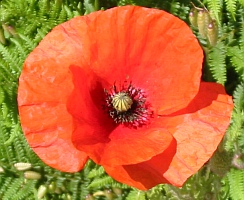 Dans l'gardîn (in the garden) perhaps you have a nice bordeuse (flowerbed) where you like to tchultiver (grow) some flieurs (flowers). Or perhaps you have to get out la faucheuse (the mower) to deal with les mèrgots (daisies) in your tapis d'vèrduthe (lawn).
Dans l'gardîn (in the garden) perhaps you have a nice bordeuse (flowerbed) where you like to tchultiver (grow) some flieurs (flowers). Or perhaps you have to get out la faucheuse (the mower) to deal with les mèrgots (daisies) in your tapis d'vèrduthe (lawn). 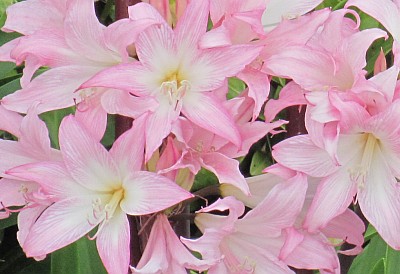 Some people like des pliantes exotiques (exotic plants) with des grandes fielles (big leaves), such as des palmes (palms) or des langues dé belle-méthe (mother-in-law's tongue) but bein des gens (many people) aiment mus (prefer) to see the garden flieuthi (in bloom).
Some people like des pliantes exotiques (exotic plants) with des grandes fielles (big leaves), such as des palmes (palms) or des langues dé belle-méthe (mother-in-law's tongue) but bein des gens (many people) aiment mus (prefer) to see the garden flieuthi (in bloom).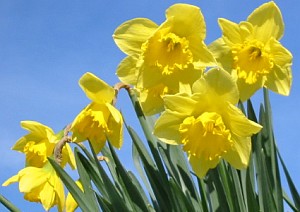 Les belles-toutes-nues (Jersey lilies – literally “beautiful women completely naked”) are naturally populaithes (popular), as are des g'zettes (daffodils), des faches dé cat (pansies – literally “cat faces”) and des pavots (poppies). La palme can also refer to the hydrangea but, like la rôse en bâton (hollyhock), les iliets (carnations) and les gérémiennes (pelargoniums), it's perhaps not as populaithe qu'ou soulait êt' (popular as it used to be).
Les belles-toutes-nues (Jersey lilies – literally “beautiful women completely naked”) are naturally populaithes (popular), as are des g'zettes (daffodils), des faches dé cat (pansies – literally “cat faces”) and des pavots (poppies). La palme can also refer to the hydrangea but, like la rôse en bâton (hollyhock), les iliets (carnations) and les gérémiennes (pelargoniums), it's perhaps not as populaithe qu'ou soulait êt' (popular as it used to be).Des gérémiennes pèrche-pièrres (hottentot fig) can be found trailing on des muthâles (walls) as well as having escaped onto les falaises (cliffs). Des gênottes (crocus), du chuchet (honeysuckle) and des pente-ouothelles (fuchsias) might also be pliantés (planted).

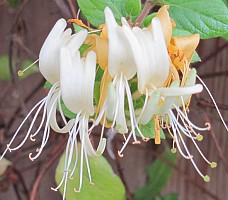 The iris goes under different names around the Island; among other things it's called lé bliajeu or lé gliajeu. But there's no argument that the marigold is la soucique, whose petals are traditionally added to la soupe d'andgulle (conger soup).
The iris goes under different names around the Island; among other things it's called lé bliajeu or lé gliajeu. But there's no argument that the marigold is la soucique, whose petals are traditionally added to la soupe d'andgulle (conger soup).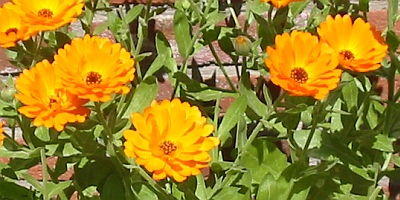 Les moûques à myi (bees) like flowers étout (as well), but perhaps ous êtes vengis (you're plagued) by des colînmachons (snails), des lînmaches (slugs), des pèrchons (greenfly) and des carpéleuses (caterpillars). Assa, i' n'y'a pon d'roses sans pitchets! (well, every rose has its thorn)
Les moûques à myi (bees) like flowers étout (as well), but perhaps ous êtes vengis (you're plagued) by des colînmachons (snails), des lînmaches (slugs), des pèrchons (greenfly) and des carpéleuses (caterpillars). Assa, i' n'y'a pon d'roses sans pitchets! (well, every rose has its thorn)